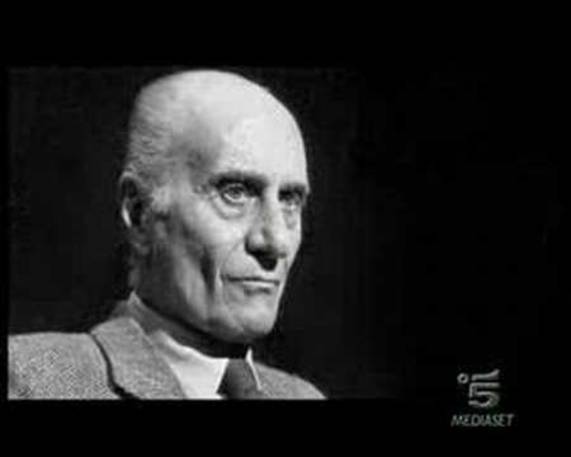


FIAT = “Fix It Again, Tony”. For decades this acronym has been an American joke on the famous Italian car maker, playing on the low quality of Fiat cars. The moment of “revenge” has now arrived for the small company in Turin. Fiat’s CEO, Sergio Marchionne, [2] has been asked to save Chrysler, a giant in the American car industry. This is not the first time that someone with an Italian last name has saved Chrysler. The same thing happened almost 20 years ago with Lee Iacocca who, thanks to his intuitive knack for launching successful new car models, was able to turn the company around in the 1980s.
Sergio Marchionne has a new challenge. He is a man who has already shown his ambition and proved his abilities in 2004 when he agreed to resuscitate Fiat from near-death. Born in 1952.
.He returned to Europe as the CEO of a Swiss chemical firm and a product-testing company partly owned by Fiat’s Agnelli family. He became a member of Fiat’s board in 2003 and, while the family struggled to manage the company that legendary Senator Giovanni Agnelli founded in 1899, Marchionne became its CEO. The Agnelli family was in upheaval; its long-time patriarch, Gianni Agnelli had just passed away, soon followed by Agnelli’s brother, Umberto, leaving no direct family successor with the Agnelli surname. Soon after, young John Elkann, the son of Margherita Agnelli (Gianni’s daughter), became Fiat’s vice chairman.
Marchionne returned Fiat to profitability in 2006 for the first time since 2000, after less than two years at its helm. The consensus in the Italian economic sector at the time was that the only thing he could do was to preside over the company’s dissolution. Instead, the stock price doubled in one year during a period of crisis in Italian car sales, and Fiat was able to increase its market share because of its dominance in the small-car segment. What was the secret to achieving such a goal? According to Massimo Vecchio, an analyst with Mediobanca, it was the CEO’s strong character and lack of diplomacy: “When Marchionne took over the company,” Vecchio told the media, “he was literally firing one manager a day. There was a leadership problem and nobody wanted to make hard decisions. The communication from top to bottom was slow and wrong. He also changed that,” the analyst added. “He reduced the layers of management and gave a more direct view of where the business was headed. And of course his ego is very big, and sometimes people who had clashes with him were basically fired. Looking at his style from outside, it seems awful, but he delivered.” Marchionne stripped away layers of management, including 10 percent of the roughly 20,000 white-collar workers in and around Turin. He also started selling as many Fiat engines and car parts as possible, even to rivals, apparently going against the company’s interests. He no longer offered steep discounts on Fiat cars, in order to stop profit losses. He showed his ambitious nature in recruiting a new engineering boss outside of Fiat to work on 23 new models between late 2007 and the end of 2008. His dynamic attitude is at the polar opposite of the dominant economic mood in Italy, which was, and unfortunately still is, lethargic. And it is this attitude that has dramatically reduced the production time for new models from four years to only 18 months. This reduced production time paved the way for the revival of Fiat’s classic Cinquecento, or 500, a new mini-car that in a short time has become a best-seller throughout Europe. Marchionne commented on this important achievement by making a comparison, and once again demonstrating his wish to dominate the car market and become number one: “I like to think of the Cinquecento as our iPod.”
Rumors surrounding Sergio Marchionne not only concern his professionalism. Photos of him wearing blue sweaters instead of traditional business suits regularly fill the pages of Italian and international magazines, along with stories about his love for cars. In 2007 he made headlines when he crashed his Ferrari 599 GTB Fiorano on a highway in Switzerland.
On April 30, Marchionne made his biggest and, according to some, riskiest move: he entered into a partnership with Chrysler that could give Fiat a majority share in the American company. In fact, Fiat’s current 20% share in Chrysler could rise to 35%. This was obtained with not one penny down, but in exchange for Fiat technology valued at some $8 billion. This was made possible by the deepening financial crisis that has crippled the automotive industry and, of course, with Sergio Marchionne’s insight. According to Dennis Redmont, head of Communication, Development, and Media at the Council for the United States and Italy [3], “Marchionne is a Canadian for the Americans and an Italian for the Italians, but as a member of the board of directors of UBS, the Swiss banking giant, he is also a banker for the Swiss. And these are the three key components of the deal: Italian culture, North American culture, financial culture. This tripod is the key, because today you have to have someone who knows banks and financial details.”
Now everyone in the U.S. is looking at Italy’s “cutting-edge technology,” as U.S. President Barak Obama said this past week in Washington. They are looking at Italy because they “have achieved what no one in Detroit could,” namely, they took “a company on the verge of collapse and made it profitable.”
This is a radical transformation for a company like Fiat, which for years has been seen as the ailing man in the European car industry, with models considered dated, peculiar, and unreliable. It’s time to change the old acronym into a brand new one: “Fix it again, Sergio.”
(Edited by Giulia Prestia)
Source URL: http://test.casaitaliananyu.org/magazine/focus/facts-stories/article/fiat-fix-it-again-sergio
Links
[1] http://test.casaitaliananyu.org/files/fiat-500-spot
[2] http://en.wikipedia.org/wiki/Sergio_Marchionne
[3] http://www.ylp.it/